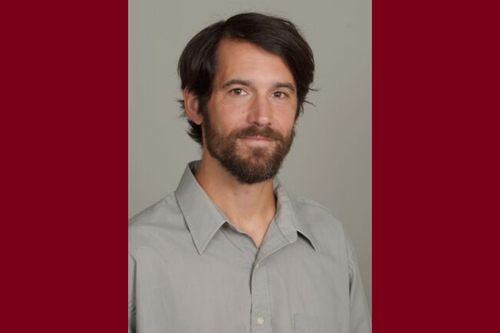
With the Twin Cities Marathon weekend weeks away, racers of all ages and skill levels will gather to run distances ranging from 3.1 to 26.2 miles.
Chris Lundstrom, Ph.D., a School of Kinesiology lecturer who specializes in endurance training and performance, exercise physiology and sports science, answers questions about how to prepare for and enjoy a marathon.
Q: Do you have any advice for first-time marathoners?
Prof. Lundstrom: Your first marathon is something you’ll never forget. There will be ups and downs — knowing that going in will help you be prepared to deal effectively with whatever the marathon throws your way. If something goes wrong, don’t panic. Just figure out how to best deal with it, and then keep moving forward.
Most importantly, try not to get too caught up in the excitement of the event during the first few miles. Many people make the mistake of starting out at a faster pace than they have done on their long runs. This leads to premature fatigue, and a very long last few miles. Use the excitement of the crowds and the atmosphere to fuel you over the last few miles, where you will really need it.
Q: What kind of training does it take to successfully run a marathon and, for amateur runners, what should a typical marathon training plan look like?
Prof. Lundstrom: There is a pretty wide range of marathon training plans depending on the goals and experience level of the runner. At a minimum, I would recommend running three to four days per week consistently for the three to four months prior to the marathon. One of those days per week should be a long run, which may start at only five to six miles, but will increase gradually to 20 miles. In addition, doing some muscular strengthening exercises at least once per week is important for marathon runners.
Q: What are common injuries associated with marathon running and how can they be prevented?
Prof. Lundstrom: There are many common running injuries, including runner’s knee, iliotibial band syndrome, shin splints, plantar fasciitis, stress fractures and Achilles tendonitis. There’s no surefire way to prevent running injuries, but there are a few things you can do to reduce the incidence. The first is to use proper running shoes that are the right type for your foot and biomechanics. Some runners need additional support and stability in their shoes, and others are better off in a neutral shoe. The second is to increase training in a gradual manner, avoiding large jumps in mileage or intensity of training.
Q: How much of marathon running is mental? Are there methods to prepare your mind as well as your body?
Prof. Lundstrom: Obviously, you can’t neglect the physical training and be prepared for the marathon, but I would say the same is true of the mental side of running. Runners have a wide range of mental skills and tools that they can use to help navigate the challenges of an event like the marathon. Those skills should be practiced throughout training. Some of the most commonly used mental skills for runners are imagery, self-talk and relaxation. Imagery involves seeing oneself running the marathon and mentally rehearsing the event prior to race day. Self-talk is a means of taking the inner dialogue that we all experience and harnessing it for more productive purposes. Focusing on specific phrases at different times during the race allows a runner to redirect thought patterns away from potentially damaging, negative thoughts to more helpful and productive ones. Relaxation is critical before and during the marathon. Being able to find a state of both mental and physical calm can spare energy for when it is needed most, later in the marathon.
Q: What is your current research in exercise focused on?
Prof. Lundstrom: Some of my current research is focused on the energy cost of running, particularly in marathoners. It is my hope to gain a better understanding of how and why some runners are able to cover the same distance while utilizing less energy than other runners. This has important implications in marathon training and preparation, as well as in helping to understand the limits of human performance.
Chris Lundstrom is a lecturer in the College of Education and Human Development’s School of Kinesiology. His research interests center on endurance exercise training and performance. More specifically, he is interested in running economy, aerobic capacity, metabolic substrate utilization and heart rate variability.
About “Talking...with U of M”
“Talking...with U of M” is a resource whereby University of Minnesota faculty answer questions on current and other topics of general interest. Feel free to republish this content. If would like to schedule an interview with the faculty member or have topics you’d like the University of Minnesota to explore for future “Talking...with U of M,” please contact University Public Relations at [email protected].
- Categories:
- Health




